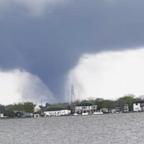Watery Waste on the Dinner Table
Huge marine garbage dumps mean contamination is making its way to your table.
Feb. 3, 2009 — -- The old saying goes, "One man's trash is another man's treasure." But what if one man's trash becomes another man's dinner?
That's a worry among some researchers, given that one of the world's largest garbage dumps is the regular feeding ground for many fish that, then, end up on cutting boards around the world.
It's a sea within a sea; an estimated 3½ million tons of garbage, mostly plastic, both sunken and floating, that covers miles of ocean stretching from the coast of California all the way to China.
The concentration of watery waste is caused by a series of currents in the Pacific Ocean that swirl in a circular motion, pulling in debris from North America, Asia and the Hawaiian Islands.
Capt. Charles Moore, who discovered the watery dump 10 years ago, calls it "the Great Pacific Garbage Patch" and told "Good Morning America" that it is growing every year.
"Bottle caps, soap bottles, shards of plastic. ... Look at that over there," Moore yelled, pointing out a patch of garbage. "That's disgusting."
The plastic decomposes but never completely disappears and is sometimes mistaken by fish and birds for food.
To raise awareness about marine debris, Marcus Erickson, a researcher on one of Moore's expeditions, took his own trip to the garbage patch in a homemade raft made of 15,000 plastic bottles.
The irony was not lost on one beautiful 12-inch rainbow runner he caught for dinner.
"We filleted it, opened the stomach and ... there were 17 fragments of plastic," he said.
Similarly, marine researcher Christiana Boerger found one fish with 26 different colorful pieces of plastic in its stomach.
"It's like putting the whole ocean on a plastic diet," Moore said.
To keep humans away from that plastic diet, Moore and Erickson's research group, called the Algalita Foundation, plan to return to the garbage patch this summer to test samples of fish to see if plastic or other hazardous chemicals could be slipping into what people eat.
Local restaurants, such as Uncle's Fish Market and Grill of Hawaii whose fish products will be shown on air, told "Good Morning America" they assure the safety of all their fish and point to a decade-long record of health safety.




